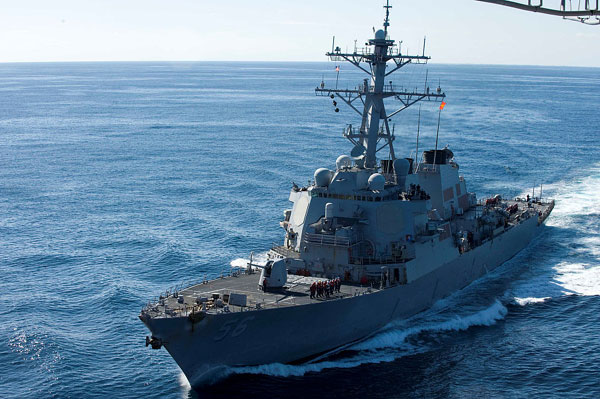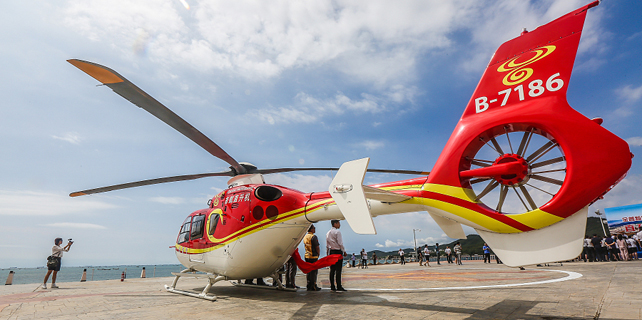US Navy becoming a hazard in Asian waters
 |
|
The guided-missile destroyer USS John S. McCain approaches the aircraft carrier USS George Washington for a fueling at sea in this December 5, 2010 handout photo courtesy of the US Navy. [Photo/VCG] |
The US Navy, which likes to claim its presence can help safeguard "freedom of navigation" in the South China Sea, is proving to be an increasing hindrance to ships sailing in Asian waters.
Early on Monday, the guided missile destroyer USS John S. McCain collided with an oil and chemical tanker in waters east of the Strait of Malacca, causing significant damage to the hull that resulted in flooding to nearby compartments. Four sailors were airlifted to hospital and 10 are missing, according to a statement released by the navy.
No members of the crew on the tanker were injured, but the vessel sustained damage near the bow.
The latest incident occurred just two months after the USS Fitzgerald and a Philippine container ship collided in waters off Japan, killing seven US sailors.
It may be hard for people to understand why US warships are unable to avoid other vessels since they are equipped with the world's most sophisticated radar and electronic tracking systems, and aided by crew members on constant watch.
But investigations into the cause of the USS Fitzgerald collision shed some light on the way US warships tend to sail without observing maritime traffic rules and the sloppiness of their crews. According to the Philippine container ship's captain, it signaled with flashing lights after the Fitzgerald "suddenly" appeared on a course to cross its path. Yet the US warship did not respond or take evasive action.
The US Navy concluded the collision was the result of "poor seamanship and flaws in keeping watch" on the part of the warship, which led to its captain and two other senior officers being removed from their posts and administrative actions being taken against members of the watch teams.
The investigations into the latest collision will take time to reach their conclusions, but there is no denying the fact that the increased activities by US warships in Asia-Pacific since Washington initiated its rebalancing to the region are making them a growing risk to commercial shipping; this is the third collision involving a US naval vessel in the region so far this year. And a US guided missile cruiser ran aground off the coast of Japan.
While the US Navy is becoming a dangerous obstacle in Asian waters, China has been making joint efforts with the members of the Association of Southeast Asian Nations to draw up a Code of Conduct for the South China Sea and it has boosted navigational safety by constructing five lighthouses on its islands.
Anyone should be able to tell who is to blame for militarizing the waters and posing a threat to navigation.






















